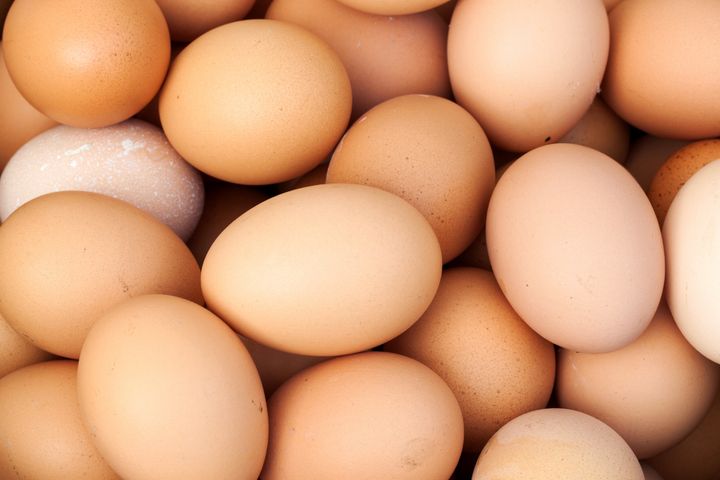
Because eggs symbolize fertility, birth, growth, possibility, potential, and life itself, they are widely associated with spring. The egg was the centerpiece of the spring festivals celebrated by the old tribes of Northern Europe in honor of Eostre, the Teutonic-Anglo-Saxon Goddess of the Eastern Dawn. She is the new awakening, the fresh start, the vernal rebirth.
Brought to Britain by Phoenician traders, She is the same Queen of Heaven celebrated by the Babylonians as Astarte and the Assyrians as Ishtar. On the equinox, eggs were dyed blood red and rolled in the newly sown soil in order to fertilize the fields. The Moon-hare, sacred animal totem of Eostre, laid additional eggs, which were colored and left hidden for children to find. This ancient fertility rite is still celebrated each year lead by the First Lady priestess on the White House Lawn.
During Purim, the Jewish spring festival, Queen Esther is praised as the heroine who saved her people from a plot of annihilation. But her story predates the biblical Book of Esther. Its roots are in the folktales of those who continued to worship the old goddess, Astarte, Ishtar, calling her Esther. The temple fathers were faced with an enduring, deep-seated reverence for this goddess of spring. Her devotees were determined. Ultimately the patriarchs accommodated and assimilated the pagan practices of Her worshippers into the religion.
Esther's original role as a fertility goddess is evident in the hamantaschen, which are the traditional sweet Purim treat. These triangular cakes filled with poppy seeds are a flagrant representation of the anatomy of female fertility -- pubic-shaped nests filled with eggs, the fruitful seeds of the season.
Eggs representing the continuation of the generations and the victory of life over death are eaten during the Passover seder, the ceremonial meal which ushers in this ancient spring festival. Another egg, which has been roasted until it is brown and brittle, is not eaten. It is placed on the seder plate in the center of the table in commemoration of the sacrifices in the original Temple in Jerusalem, the hard-boiled adversity, which also occurs in life. I have heard of one family that uses hollowed eggs, rather than roasted. After the seder each year, the mother inscribes the date on the egg and decorates it with symbols. Their Passover egg collection dates from 1812.
The egg is as central to the commemoration of Easter as it once was to the ancient festivals in honor of the fertility goddess Eostre. The Church adapted the symbols, the ceremonies, and even the name of the old pagan spring festivities celebrated Eostre-Ishtar-Esther to create Easter. Jesus, like a baby chick, breaks through the hard, cold, coffin shell of death to be reborn every spring. In the resurrection of Christ, we witness the vernal rebirth of the soul.
The egg remains, as it always has been, an enduring reminder of the promise of everlasting life. Eggs are still brought, in unbroken continuity, by a sacred bunny, the animal familiar of Eostre. And, as always, they are still dyed, decorated, rolled, hidden, exchanged and eaten in spring.
The decoration of eggs is the most common Easter custom in the Christian world today. Red eggs in the old style are perhaps the most prevalent cross-culturally, although, we in the West, are probably more familiar with a pale palette of pastel primavera shades with patterns or polka dots and the occasional bunny sticker.
The incredibly ornately painted traditional eggs made by Polish and Ukrainian women have developed into the fine folk art of pysanki. The minutely detailed patterns depict aspects of the ancient goddess and Her philosophy: Bohynja-Berehynja, the Grand Goddess; Knjahynia, the Princess; Koroleva, the Queen Mother Earth; and Stara Baba, Cold Woman. Dots, depending on their configuration, represent stars in heaven, tears, or fixed points that have no beginning and no end. A dot within an enclosing circle stands for the axis of the universe, eternity as seen within an egg.
Eggs dyed red as the womb were given as gifts at the spring festivals in ancient Egypt, Persia, Greece and Rome. Greeks still toast each other at the family Easter dinner by tapping hard-boiled red eggs, one person to the next around the table. The egg that survives the clinking go-round uncracked brings luck for the year to the person who holds it.
Ancient Chinese custom maintains that standing a raw egg on its end at the first moment of spring promises good luck for the rest of the year. It is an old Scandinavian custom, as well. Modern Iranians, like their Persian ancestors, exchange red eggs for blessings of luck at Narooz, the Spring Equinox, also celebrated as the New Year.
Eggs clearly hold undeniable symbolic power for people. Eggs, like seeds are the future, figuratively and literally. By employing eggs to celebrate the vernal season of new beginnings, we are pledging ourselves to the ever-renewing energy of the life force. We are in sync with the cycles and ready to turn the pages of the calendar over easy.
***
Join Urban Shaman, Donna Henes
Eggs on End: Standing on Ceremony
38th Annual Vernal Equinox Celebration
Wednesday, March 20, 2013
6:45 AM EDT event begins.
7:02 aM EDT exact equinox moment.
Grand Army Plaza, Brooklyn, NY
If you cannot come to this event in person, do stand an egg wherever you are. Remember to translate the equinox time into your local time zone.
Please send me a picture of your eggs standing on end along with your name and location.
HAPPY SPRING!
